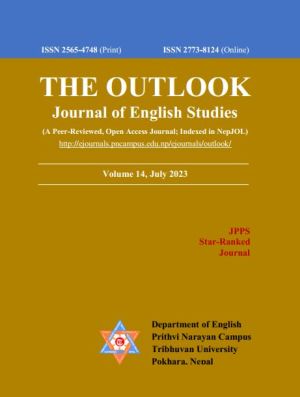Revisiting Partition in Tanvir Mokammel's Films in the Light of Geo-Cultural Identity Theory
DOI:
https://doi.org/10.3126/ojes.v14i1.56660Keywords:
South Asia, partition, geo-cultural identity theory, Tanvir Mokammel filmsAbstract
The partition of 1947 is the most tragic and remarkable incident in the history of modern South Asia in creating new political identities. It separated peoples of common ethno-cultural and religious origins with artificial political borderlines imposed on their historical homelands that transformed the traditional socio-political arrangement of this region into a regional international nation-state system. Consequently, two independent states, India and Pakistan, came into being as a result of partition based on the two-nation theory. Millions of the inhabitants had to be displaced and migrated from their birth lands. In the changed circumstances, the natural identity of the individual by birth has been replaced by the political identity of the state. Due to these changes, many people remain stateless and become refugees. It appears as an unending source of crisis in this region such as identity and citizenship crises, communal politics, linguistic and cultural conflicts, communal riots, force-displacement, border killings, etc. These issues are well addressed in the three partition films - Chitra Nadir Pare (Quiet Flows the River Chitra), Swapnabhumi (The Promised Land) and Seemantorekha (The Borderline) produced by Tanvir Mokammel, an internationally acclaimed auteur filmmaker in Bangladesh. His deep insight into post-partition impact has been reflected in these films. How a filmmaker perceives partition is revisited and analyzed in this paper by an idea of contemporary political philosophy known as ‘geo-cultural identity theory’.
Downloads
Downloads
Published
How to Cite
Issue
Section
License

This work is licensed under a Creative Commons Attribution-NonCommercial 4.0 International License.
This license enables reusers to distribute, remix, adapt, and build upon the material in any medium or format for noncommercial purposes only, and only so long as attribution is given to the creator.

